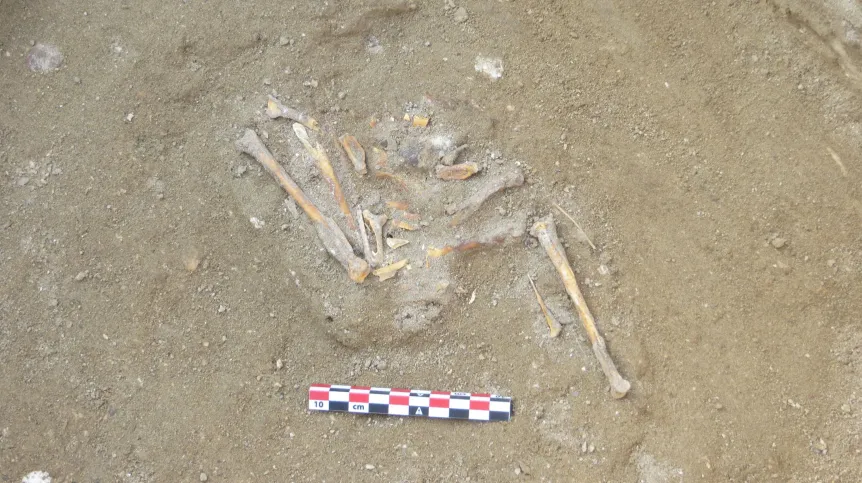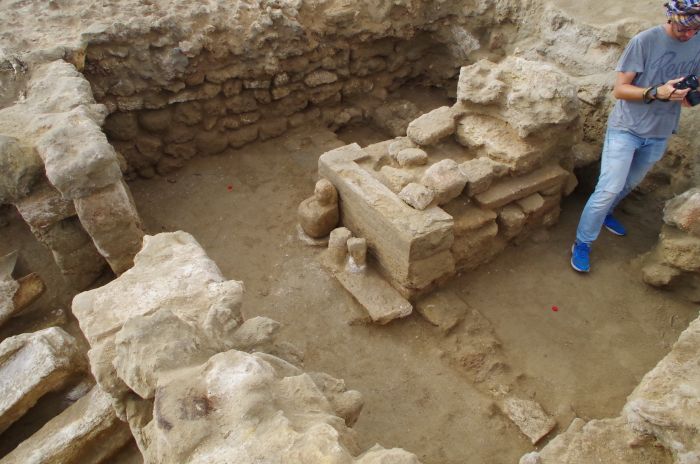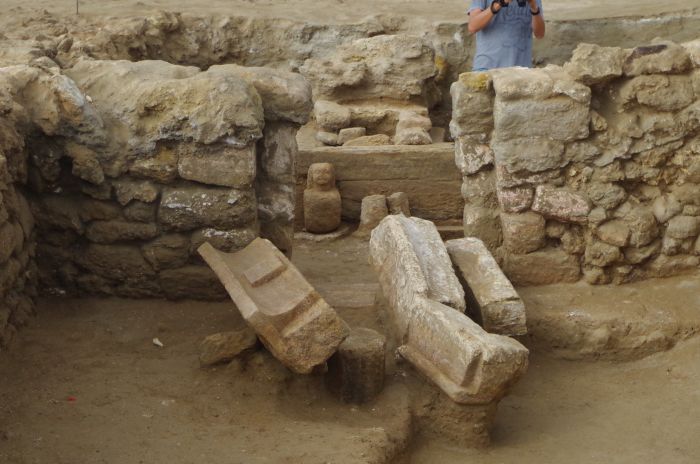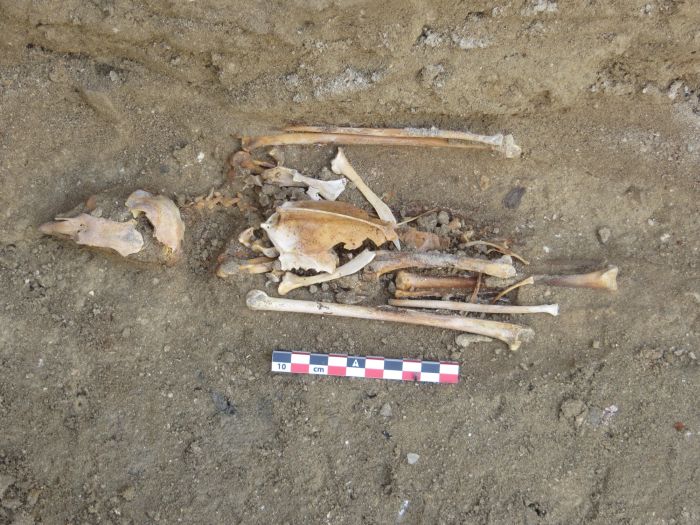
The remains of over a dozen headless falcons deposited in an ancient Egyptian shrine 1,500 years ago have been discovered by archaeologists in the Port of Berenike on the Red Sea.
The remains were found alongside eggshells next to a stylised sculpture.
Dr. Marta Osypińska from the Institute of Archaeology of the University of Wrocław who analysed the remains of birds said: “The discovery of the ‘falcon shrine’ was a pure accident. Just before the start of the research, no one knew the function of the building. It was believed to have had an administrative role’,

She added: “After lifting it, it turned out that there were bones underneath. It was a carefully arranged, complete skeleton of an adult falcon. It had a skull and a large beak.”
While the building in which the falcons had been deposited was not large, the entrance to it was monumental. Just before the entrance, archaeologists discovered a small stele - a stone slab ornamented with depictions of Egyptian gods, including Horus, the falcon god.
Although the cult of Horus, worshiped in the form of the bird, was common in ancient Egypt, the discovered shrine is unique according to researchers.

The archaeologists also discovered an inscription written in Greek saying: “It is improper to boil a head in here.”
Professor Olaf Kaper from the University of Leiden who deciphered the ancient text said: “The text dumbfounded everyone. While in the 3rd-4th century Egypt Christianity was common, the falcon cult connected with the god Horus still existed in the desert and birds were offered to Horus.”
According to Dr. Osypińska it is unclear why the falcons’ heads were missing and why the only complete skeleton was covered with a vessel.
According to the researcher, this form of burial could suggest that the bodies of birds had been cooked.

During the 4th to 6th century CE, Berenike was inhabited by Blemmyes, who became independent of the authorities of other Mediterranean empires.
It was a little-known, nomadic Nubian tribe inhabiting the mountainous Eastern Desert. However, then it controlled the territory east of the Nile, from today's Ethiopia to Berenike. The authorities administered the city and became rich by participating in trade between Byzantium and communities living in the Indian Ocean area.
Becoming a ‘cultural melting pot, Blemmyes adopted the Egyptian religion in a specific form, with clear Greek and Roman influences.
The discovered shrine was built on one of the highest hills of the ancient city. It was in this area that other holy shrines were also located: the Great Temple of Seapis and Isis, built according to Egyptian craft.
During its use, the shrine interior was dark, the walls are made of sandstone and coral blocks and a stone pedestal was located in the middle, on which the statue of Horus probably stood.
The headless falcons were deposited nearby.
Dr. Osypińska said: “We can imagine that the interior was illuminated by olive lamps and incense was burned. The faithful brought falcons to win favour of Horus. They could catch the birds or steal them from nests in the nearby mountains. It is also possible that falcons were bred in Berenike for ritual purposes.”
Berenike was founded in the 3rd century BCE by Ptolemy II. Initially, the port served as a hub to transport African elephants. In the first century CE, the Romans who took power over Egypt made the city an important hub for trans-oceanic trade connecting Black Africa, the Middle East and India.
The Berenike Project is a joint mission of the Polish Centre of Mediterranean Archaeology of the University of Warsaw and the University of Delaware. Archaeozoological research in Berenike is financed by the Polish National Science Centre. Dr. Joan Oller Guzmán from the Autonomous University of Barcelona supervised the excavations in the falcon shrine.
The results of the research in the shrine have recently appeared in the American Journal of Archaeology (https://doi.org/10.1086/720806).
PAP - Science in Poland, Szymon Zdziebłowski
szz/ ekr/ kap/
tr. RL













